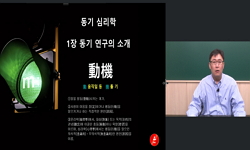This paper is written with the object of analyzing the structure of a taboo tale and newly pursue its symbolic meaning. The structure of this paper comprises of `Examination of history of studies`, `Fundamentals and meaning of taboo`, `Structural dist...
http://chineseinput.net/에서 pinyin(병음)방식으로 중국어를 변환할 수 있습니다.
변환된 중국어를 복사하여 사용하시면 됩니다.
- 中文 을 입력하시려면 zhongwen을 입력하시고 space를누르시면됩니다.
- 北京 을 입력하시려면 beijing을 입력하시고 space를 누르시면 됩니다.
https://www.riss.kr/link?id=A75191705
- 저자
- 발행기관
- 학술지명
- 권호사항
-
발행연도
2008
-
작성언어
Korean
-
주제어
principles of taboo ; 금기의 원리 ; Meaning of taboo ; 금기의 의미 ; taboo motif ; 금기화소 ; rite ; 종교의례 ; Psychological Desire ; 심리 욕구 ; social system ; 사회 제도 ; Lack ; Lack Liquidated ; 결핍과 결핍해소 ; taboo abrogation ; 금기 파기 ; Attempted Escape ; 탈출 시도 ; reveal taboo ; 드러난 금기 ; hidden taboo
-
KDC
700
-
등재정보
KCI등재
-
자료형태
학술저널
- 발행기관 URL
-
수록면
1-28(28쪽)
- 제공처
-
0
상세조회 -
0
다운로드
부가정보
다국어 초록 (Multilingual Abstract)
This paper is written with the object of analyzing the structure of a taboo tale and newly pursue its symbolic meaning. The structure of this paper comprises of `Examination of history of studies`, `Fundamentals and meaning of taboo`, `Structural distinctions of taboo tales` and `Symbolic meaning of taboo tale`. For `Examination of history of studies`, I`ve summed up studies about Korean taboo tales, organized and analyzed them in order to search for imperfections and set a direction for this study. I`ve come to a conclusion as follows in `Fundamentals and meaning of taboo`. I made it certain that a taboo has a ritual function, required when performing a ritual such as a rite of passage in the ancient religion. I`ve found out that a taboo has a restraining characteristic for instinctive desire(i.e., incest) from a psychological desire aspect. I`ve also learned that the purpose of a taboo is shown in the willingness, expressed paradoxically in duplication, to protect oneself from transcendental power or terror of mysterious supernatural power. In `Structural distinctions of taboo tales`, I`ve examined (1)Expressions of a taboo motif, and (2)narrative structure of taboo tales. There are ①negative instructions such as"Don`t do (blank)"and ②positive instructions such as"If you do (blank), (blank) will happen"for taboo expressions. The effect of negative instructions is that it makes the scenes of the story more real by not warning about the result of punishment beforehand. As for the content of taboo, there are unconcealed taboos such as ③"Don`t (blank)"and ④hidden taboos which is not expressed in the writing but can be inferred from the result. In the ④hidden taboos, more weight is given to the in-depth moral punishment rather than superficial punishment where the result of punishment is directly linked to curiosity or inquisitiveness. `Narrative structure of taboo tales` evolves by explaining the tragic ending met by destroying taboos. The basic structure of taboo tales comprises of three parts, A. deficiency and settlement of deficiency, B. taboo and destruction of taboo and C. punishment and attempt to escape. In `Symbolic meaning of taboo tales`, I`ve traced and analyzed the symbolic meaning from aspects of religious ritual, psychological desire and societal system. A taboo from a ritual aspect is a symbolic expression of worldly human being`s desire to challenge the world to obtain sacredness across the board, aspiration and challenge in other words. From a psychological desire aspect, a taboo tale is a cultural phenomenon which reveals human`s old latent unconsciousness and has a function of restraining instinctive desire while taboos were created and settled in ethics and morality. From a societal system aspect, a taboo tale is perceived as a symbol of attempt to escape to a sacred world, away from the constraint of a worldly society.
동일학술지(권/호) 다른 논문
-
- 한국언어문화학회
- 차혜영 ( Hye Young Cha )
- 2008
- KCI등재
-
《춘향전(春香傳)》과 원잡극(元雜劇) 《두아원(竇娥寃)》의 비교연구
- 한국언어문화학회
- 이태복
- 2008
- KCI등재
-
- 한국언어문화학회
- 김영순 ( Young Soon Kim )
- 2008
- KCI등재
-
- 한국언어문화학회
- 이승훈 ( Seung Hoon Lee )
- 2008
- KCI등재






 KISS
KISS






